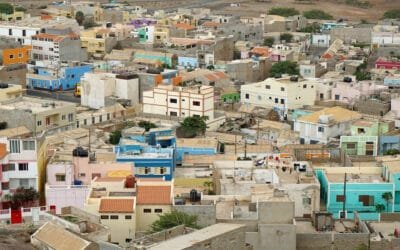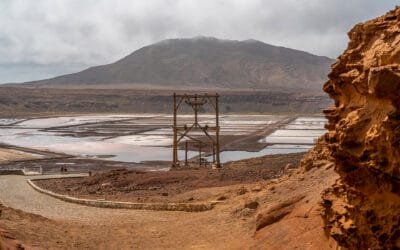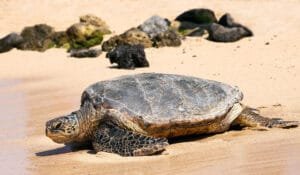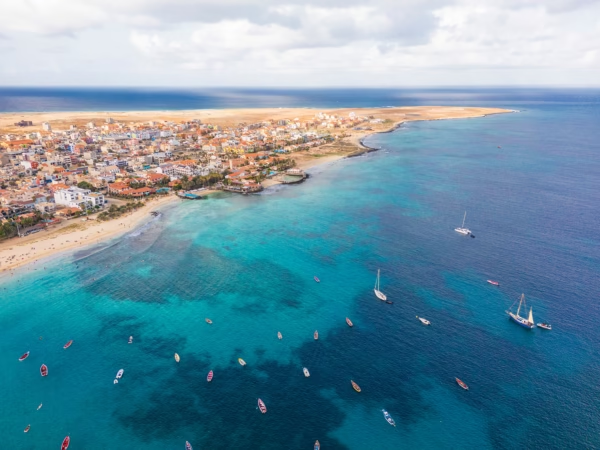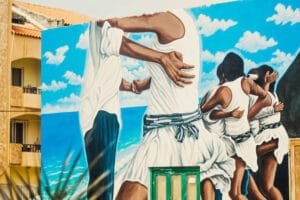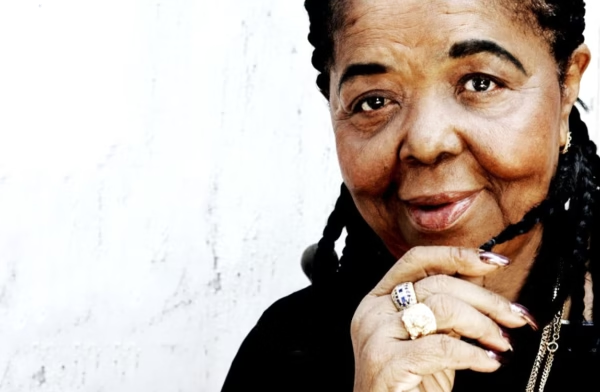Santa Maria Beach: Soft Sand and the Beautiful Ocean
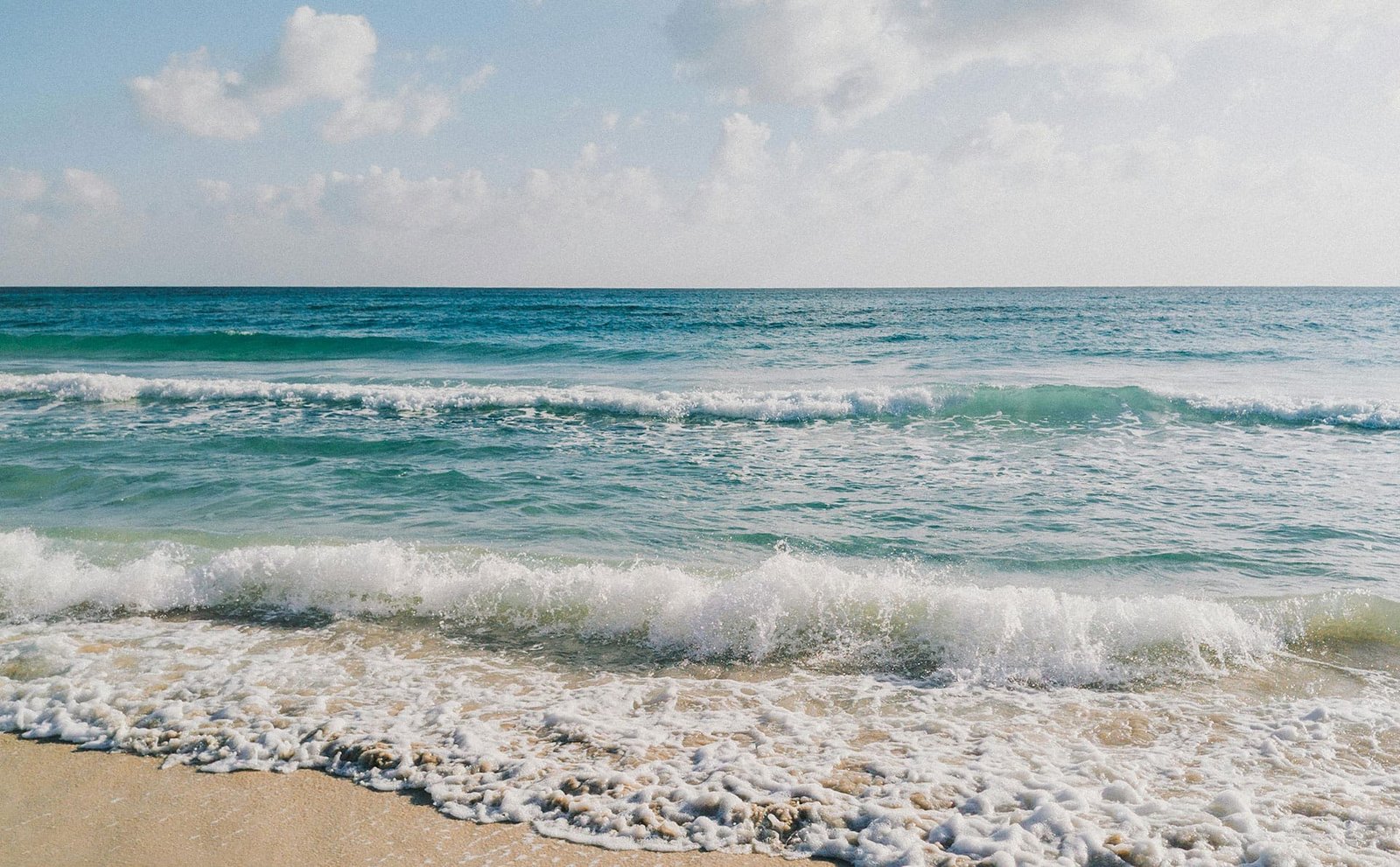
Praia de Santa Maria: Santa Maria Beach
Santa Maria Beach stretches for eight kilometres along Sal Island’s southern coast, the longest uninterrupted stretch of sand in Cape Verde. The beach begins at the Pontão de Santa Maria pier in the town centre and curves west past hotel complexes and beach bars until it reaches the rocky outcrops near Ponta do Sinó.
Designated as one of Cape Verde’s Seven Natural Wonders, the beach combines soft gold sand and consistently warm waters averaging 24°C year-round. The bay formation creates much calmer conditions than on other Sal’s beaches more exposed to Atlantic. This protection makes it ideal for swimming, though the beach still experiences enough wave action to support various water sports.
Most hotels and restaurants cluster along the central two kilometres, while the eastern and western extremes remain relatively undeveloped. The famous wooden pier, or pontão, serves as both a working fishing dock and the beach’s most recognisable landmark, where local fishermen sell their catch each morning around 11 AM.
The Morning Theatre at Pontão
It’s 5:47 AM, and João Fernandes is already loading ice into his boat. The seventy-year-old fisherman has been launching from Santa Maria Beach since before the first hotel broke ground, back when this was just another fishing village that happened to have exceptional sand. Now his morning ritual plays out against a backdrop of infinity pools and yoga classes, but the fish don’t care about gentrification.
By 11 AM, the pontão transforms into Sal’s most authentic theatre. Tourists gather with their phones as boats return, their algorithms struggling to capture what the human eye processes instantly — yellowfin tuna that have fought for hours, wahoo with teeth like surgical instruments, and dorado that change colours even in death. The fishermen work with practised efficiency, filleting and weighing, negotiating prices in Kriolu that sounds like Portuguese filtered through West African rhythm.
What nobody photographs is the economics playing out in real time. That ten-kilo yellowfin will sell for €40 to a restaurant that charges €35 for a single tuna steak. João makes more in a good morning than his grandfather made in a month. However, his boat costs €8,000, fuel runs €50 daily, and the fish keep moving further offshore as water temperatures rise and hotel sewage alters the reef ecosystem.
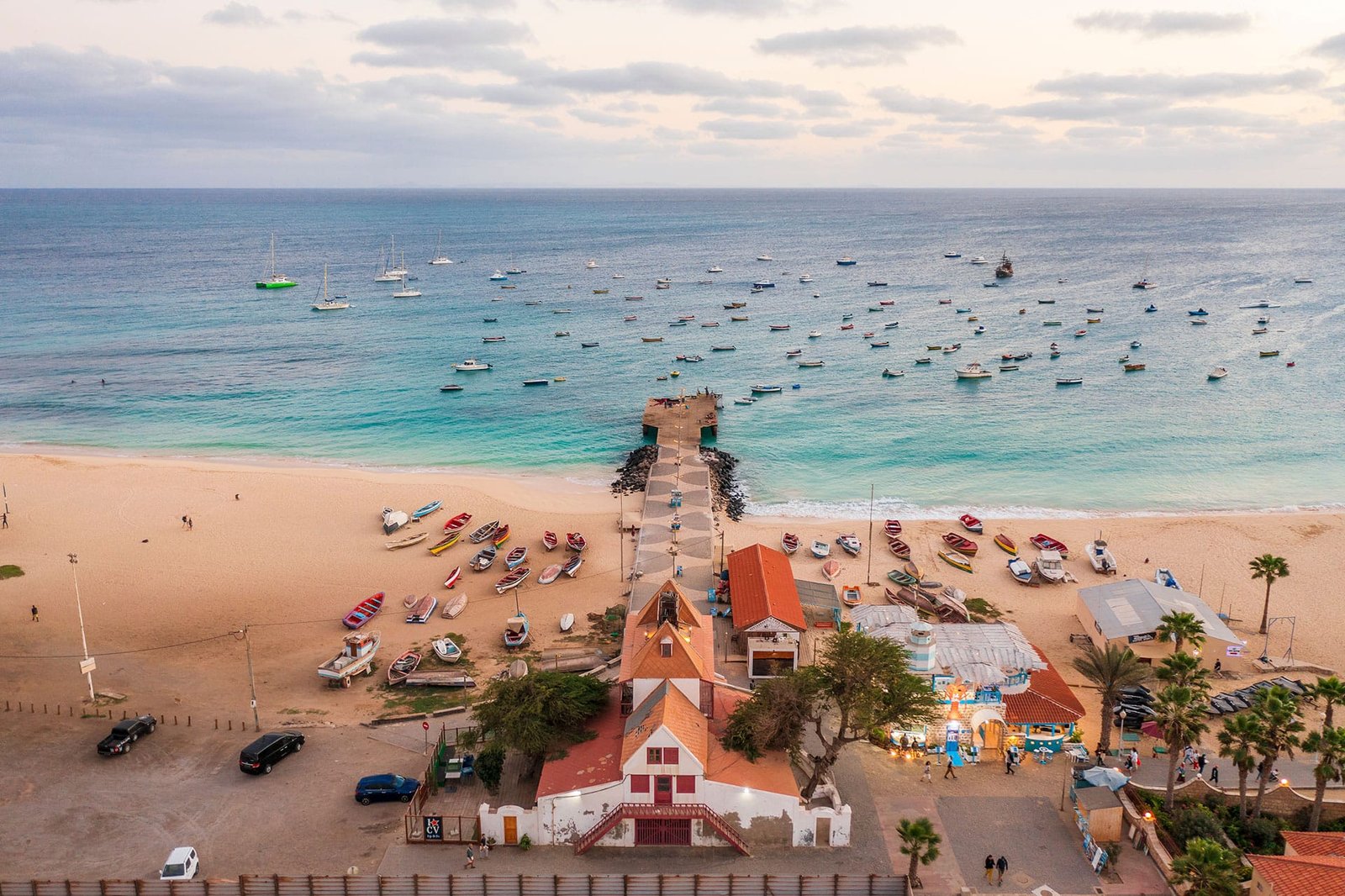
Santa Maria Beach: The Seven-Kilometre Compromise
Walk Santa Maria Beach from end to end — really walk it, not the tourist stroll between beach bars — and you’ll traverse seven different worlds. Start at the pontão, where the original Santa Maria survives in wooden boats and net repairs. Move west past the Morabeza Hotel, the island’s first proper resort, built in 1967 when tourism was an experiment, not an economy.
The beach widens past the Hilton, opened in 2022 with 400 rooms and a casino that locals aren’t legally allowed to enter. Here, the sand is raked each morning by hotel staff who arrive on 5 AM aluguers from Espargos, Sal’s capital, where real Cape Verdeans can still afford rent. Sunbeds rent for €15 daily. The exact spot was free until 2018.
Continue past Beach Bar Number Six (nobody remembers their actual names anymore), past the RIU Palace’s 1,000 rooms, past the point where wifi signals overlap and cancel each other out. The crowds thin. The music fades. You’re entering what locals call “the real beach”.
At Ponta do Sinó, where the beach ends in volcanic rocks, you might find Sergio Cruz. He’s been coming here to fish since 1987, back when Santa Maria had 2,000 residents. Now it has 25,000, though nobody knows for sure because half are undocumented West Africans working construction sites that never seem to finish.
“The beach was bigger then,” Sergio says, casting his line past the rock shelf. He’s not being nostalgic. Winter storms did indeed deposit more sand before the hotels built seawalls, which altered current patterns. The beach is literally shrinking, losing about 30 centimetres annually, according to a University of Cabo Verde study that the government prefers not to discuss.
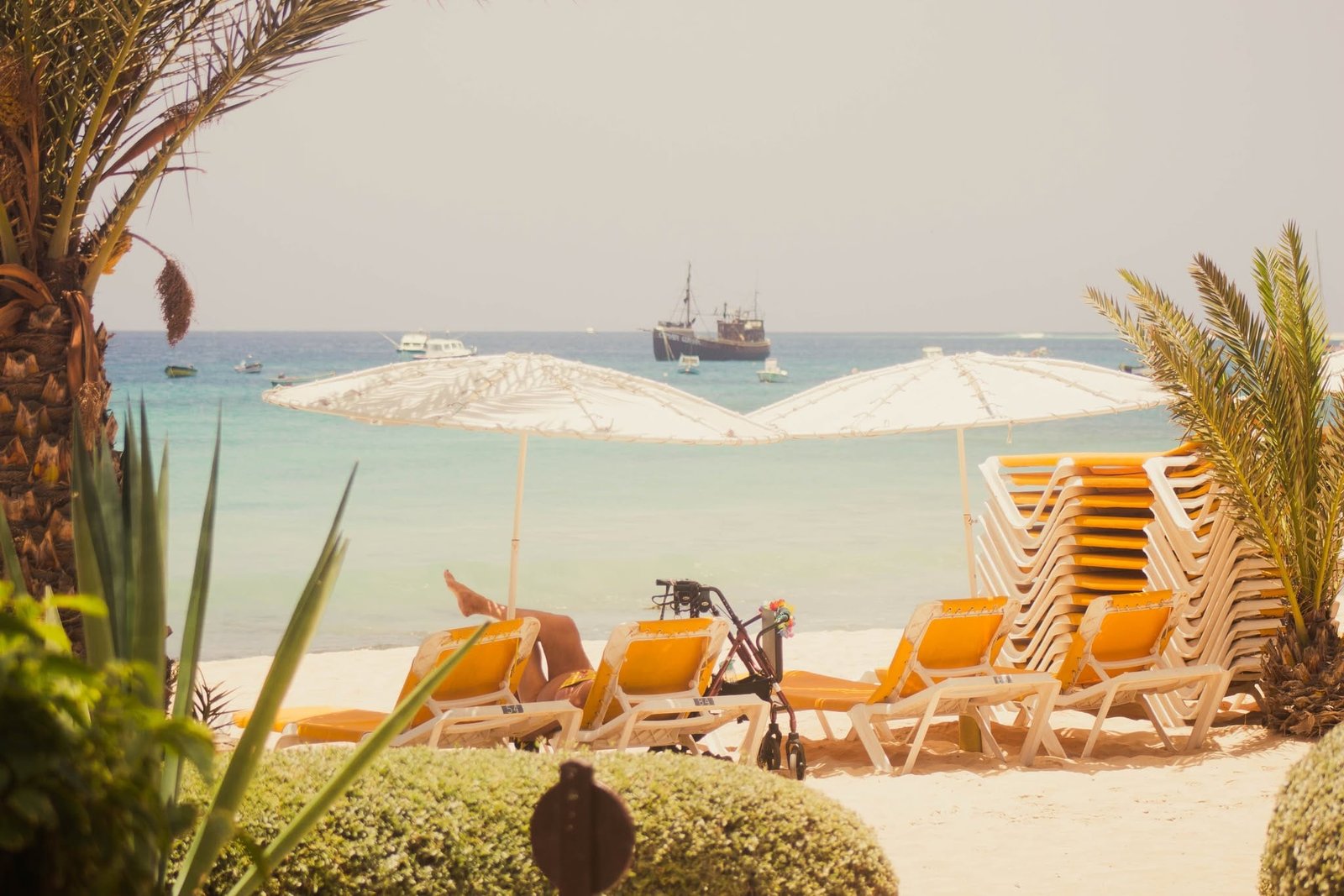
Beneath the Turquoise Marketing
The water at Santa Maria Beach maintains that specific shade of turquoise that appears in every Cape Verde tourism campaign. It’s not fake — the combination of white sand reflecting through shallow water really does create that colour. What’s fake is pretending it’s always like this.
From December to March, when charter flights arrive hourly from Manchester and Munich, the water is perfect. Clear, warm, with visibility extending fifteen metres on calm days. You can watch sergeant majors defending their territory, parrotfish grinding coral into future sand, and the occasional turtle pretending tourists don’t exist.
April through November tells another story. The winds that made Sal famous among kitesurfers also stir sediment, reducing visibility to five metres on rough days. Jellyfish appear in August; their stings are mild but memorable. October brings what locals call “green water” — algae blooms fed by hotel runoff that turn paradise into something resembling soup.
Yet even compromised, the ocean here surpasses most of Europe’s beaches. Water temperatures never drop below 21°C. Waves rarely exceed two metres in the protected bay. The undertow that claims tourists at other Cape Verde beaches barely exists here. It’s safe enough for parents to let children play in the shallows, and democratic sufficient that anybody with a mask can explore the pier’s pylons, where thousands of fish create living kaleidoscopes.
The dive operators know where to find the real treasures. Ten minutes by boat reach Palmeira’s wrecks. Twenty minutes to find the cave systems where moray eels grow large enough to feature in nightmares. But most tourists never leave the bay, content to float in water that requires no wetsuit, no courage, no particular skill beyond basic buoyancy.
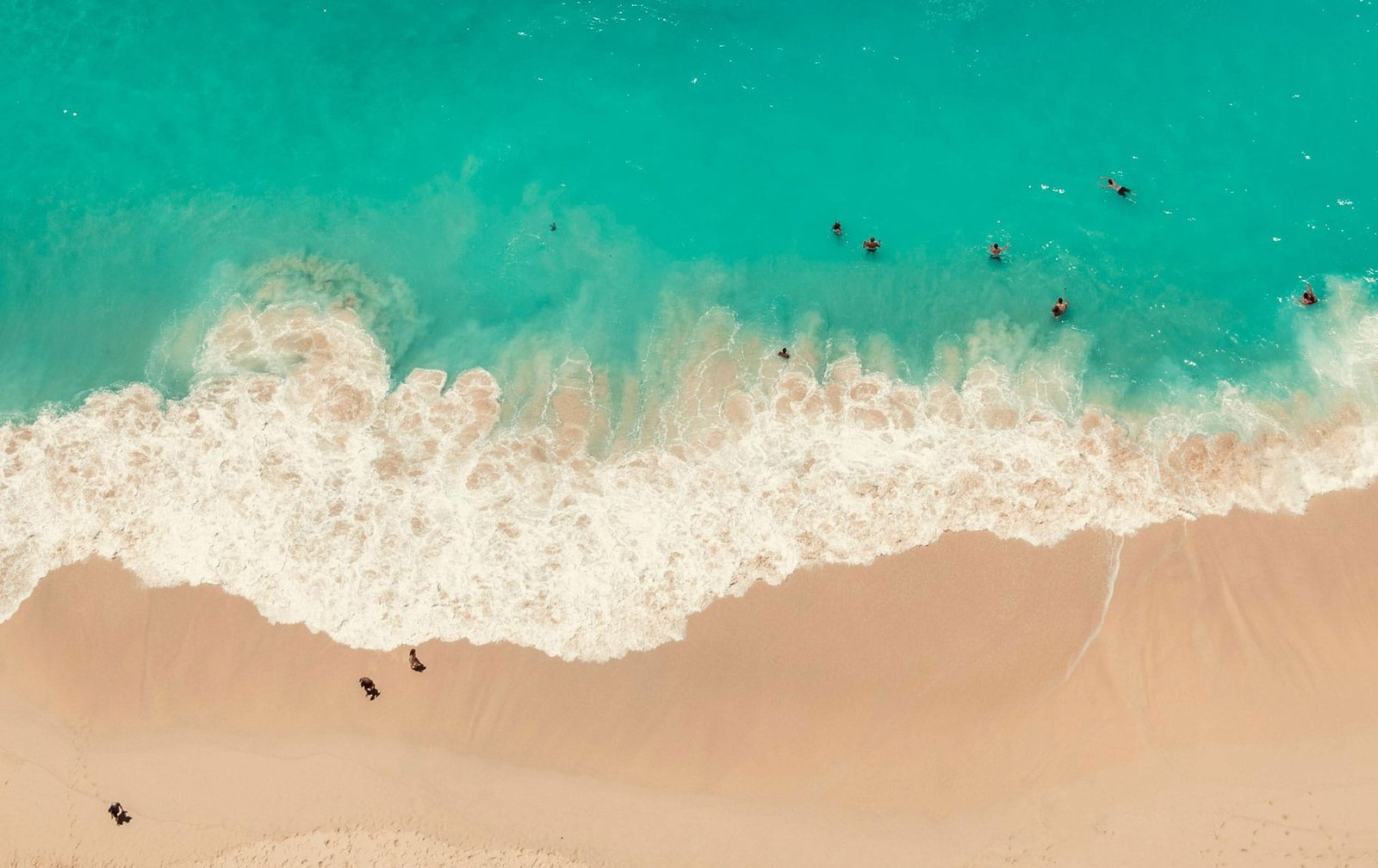
The All-Inclusive Paradox
The Meliá Tortuga Beach contains 662 rooms across 65 hectares. The RIU Palace Santa Maria houses 1,001 guests. The Hilton adds another 400. Count all the all-inclusive resorts along Santa Maria Beach, and you reach capacity for 8,000 tourists who might spend a week on Sal without handling local currency.
These architectural islands operate on a peculiar economic logic. Guests pay €1,500 for a week where everything’s included — meals, drinks, entertainment, even airport transfers in branded buses with tinted windows that turn poverty into sepia-toned authenticity. The hotels pay Cape Verdean staff €300 monthly, Senegalese construction workers even less, while executives in Palma and Frankfurt decide which colour to paint the poolside bars.
The all-inclusive model creates parallel universes. Inside the resorts, Germans drink Spanish beer while eating Italian food prepared by Cape Verdeans pretending to be Brazilian at the Friday night “carnival.” Outside, actual Cape Verdeans run restaurants that tourists never discover, serving cachupa that tastes like history and grilled fish that costs what it should.
Maria Sousa cleans rooms at one of the big Santa Maria hotels. She’s worked there for eight years, speaks four languages, and knows every guest’s hangover remedy. Her monthly salary equals what guests pay for two nights. She lives in a shared apartment in Espargos, commuting an hour each way. And she sends half her earnings to her family on Santo Antão Island, where tourism has not yet arrived.
“The hotels saved Sal,” she says during her break, smoking cigarettes. “But they’re killing Santa Maria.”
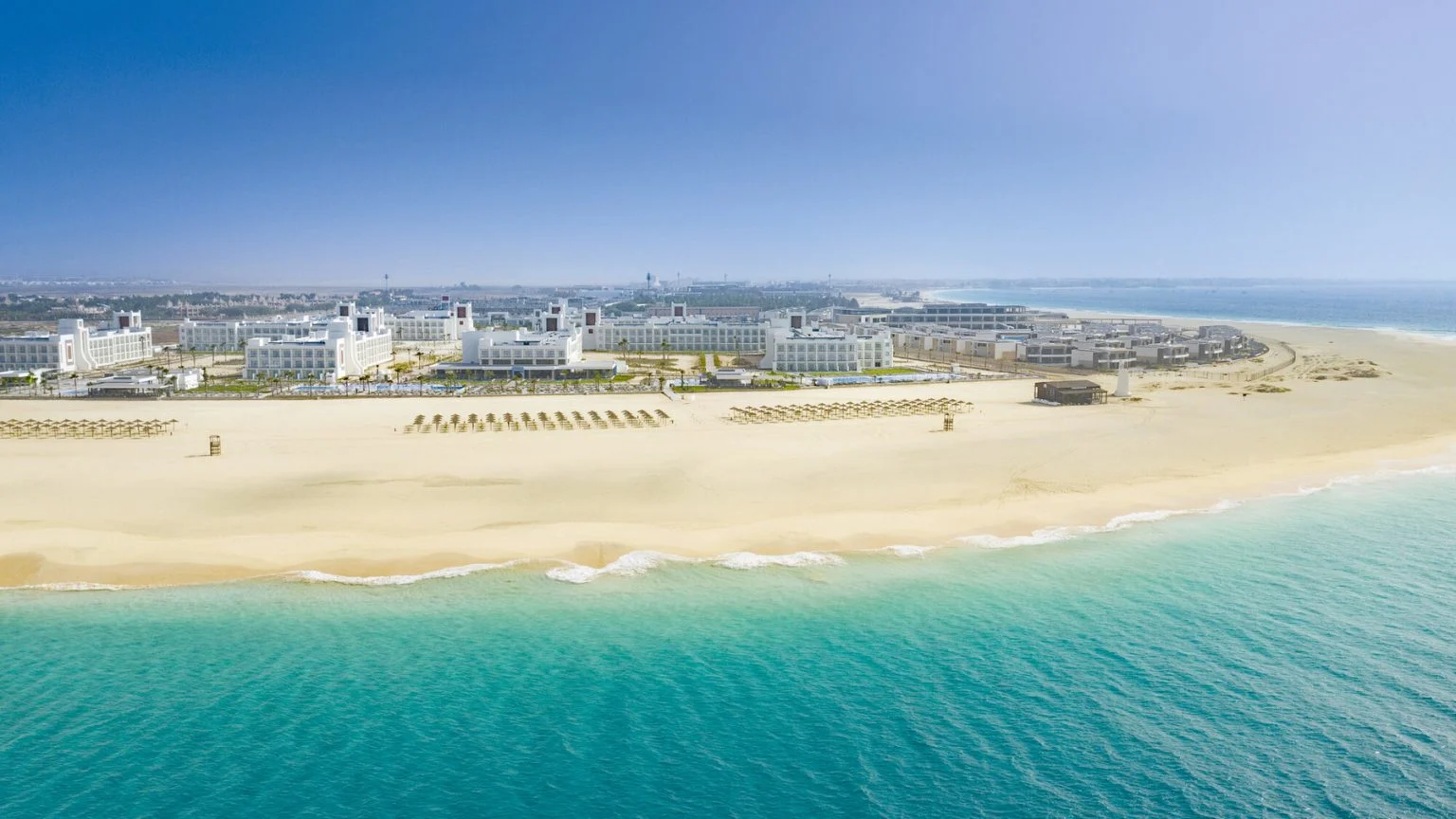
Santa Maria Beach Between Tradition and TripAdvisor
The restaurants along Santa Maria Beach occupy a strange middle ground between authenticity and algorithm. Cabo Verde Diving posts handwritten signs advertising “fresh fish” that was frozen the day before. Ocean Café charges €18 for a “traditional” cachupa that contains bacon, an ingredient no Cape Verdean grandmother would recognise. The Dubliner Irish Bar, run by a Portuguese family, serves “authentic” fish and chips to British tourists who rate it 4.7 stars on TripAdvisor.
But push past the beachfront and you find places that predate the tourism boom. Chez Pastis, where the French owner has been marrying Gallic technique to Cape Verdean ingredients since 1994. Restaurante Xaguate, hidden in a residential area, where locals celebrate birthdays and tourists accidentally discover what lobster should cost.
The beach bars multiply each season, identical in their difference. This one has swings instead of chairs. That one projects football matches on a bedsheet. Another builds Instagram-worthy nests from driftwood that will last exactly until the next storm. They serve the same cocktails (caipirinha, mojito, the inevitable “Santa Maria Sunset”), play the same music (Cesária Évora on repeat, Bob Marley for variety), employ the same beautiful people who came for one season and never left.
Yet something authentic survives in the cracks. Watch the fishermen’s wives selling grilled fish from coolers. The recipes are unchanged since their grandmothers’ time. Find the spot where locals play football at low tide, marked by goals indicated by flip-flops. Discover the section of beach where Cape Verdean families gather on Sundays, grills improvised from wheel rims, children learning to swim where their parents learned, music that tourists would love if they knew it existed.

The Wind Economy
Every afternoon around 2 PM, the trade winds build from their morning whisper to their afternoon roar. Fifteen knots become twenty. Twenty becomes twenty-five. The beach transforms from tropical paradise to natural wind tunnel. Tourists retreat to pools. Kitesurfers emerge like dolphins sensing fish.
Santa Maria Beach created Sal’s kitesurfing industry before Kite Beach existed. The bay’s orientation — protected from northern swells but exposed to northeastern trades — provides what instructors call “idiot-proof conditions.” The wind blows side-shore, meaning mistakes result in beach landings, not oceanic voyages. The water’s shallow enough to stand until you’re 200 metres out. Waves exist, but don’t punish.
Now the beach hosts six kite schools, fifteen freelance instructors, and enough rental shops to equip an army. The economics are brutal: schools charge €400 for beginner courses, pay instructors €50 daily, and pocket the difference. Equipment that costs €2,000 rents for €80 daily. Do the math, and you understand why every kid in Santa Maria wants to teach kitesurfing.
But the real money flows through intermediate connections. The Austrian dentist finally buys an apartment because he likes to spend four weeks every year in Sal with his family. The Italian entrepreneur opens a beach bar because his Spanish girlfriend teaches kitesurfing on the island. Each transaction adds another layer to Santa Maria’s transformation into a hub for international tourists, extreme sports enthusiasts and digital nomads.
The Night Shift
After sunset, Santa Maria Beach changes. The hotels light their pools in turquoise, mimicking the ocean’s daytime palette. Beach bars switch music. The sand, still warm from twelve hours of sun, hosts conversations in seventeen different languages.
This is when the beach workers appear — the ones who rake sand, collect bottles, and repair the damage tourists don’t notice they’re causing. They’re mostly West African migrants who paid thousands to reach this island that Europe treats as almost-Europe, good enough for visa-free holidays but not good enough for labour protection.
Moussa from Senegal works three jobs — beach cleaner at dawn, sunbed attendant midday, and security guard at night. He sends money to a family he hasn’t seen in three years. He lives in a room with four other men, speaks five languages, and owns two shirts. He knows Santa Maria Beach better than any tourist, has seen it at every hour, in every season, through eyes that understand what paradise costs.
The beach police patrol on ATVs, engines disrupting conversations about meaningful things. They’re checking for illegal vendors (Senegalese selling sunglasses), unlicensed parties (locals playing drums), and unacceptable behaviour (poverty existing where tourists might see it). The beach must remain pristine for tomorrow’s Instagram posts.
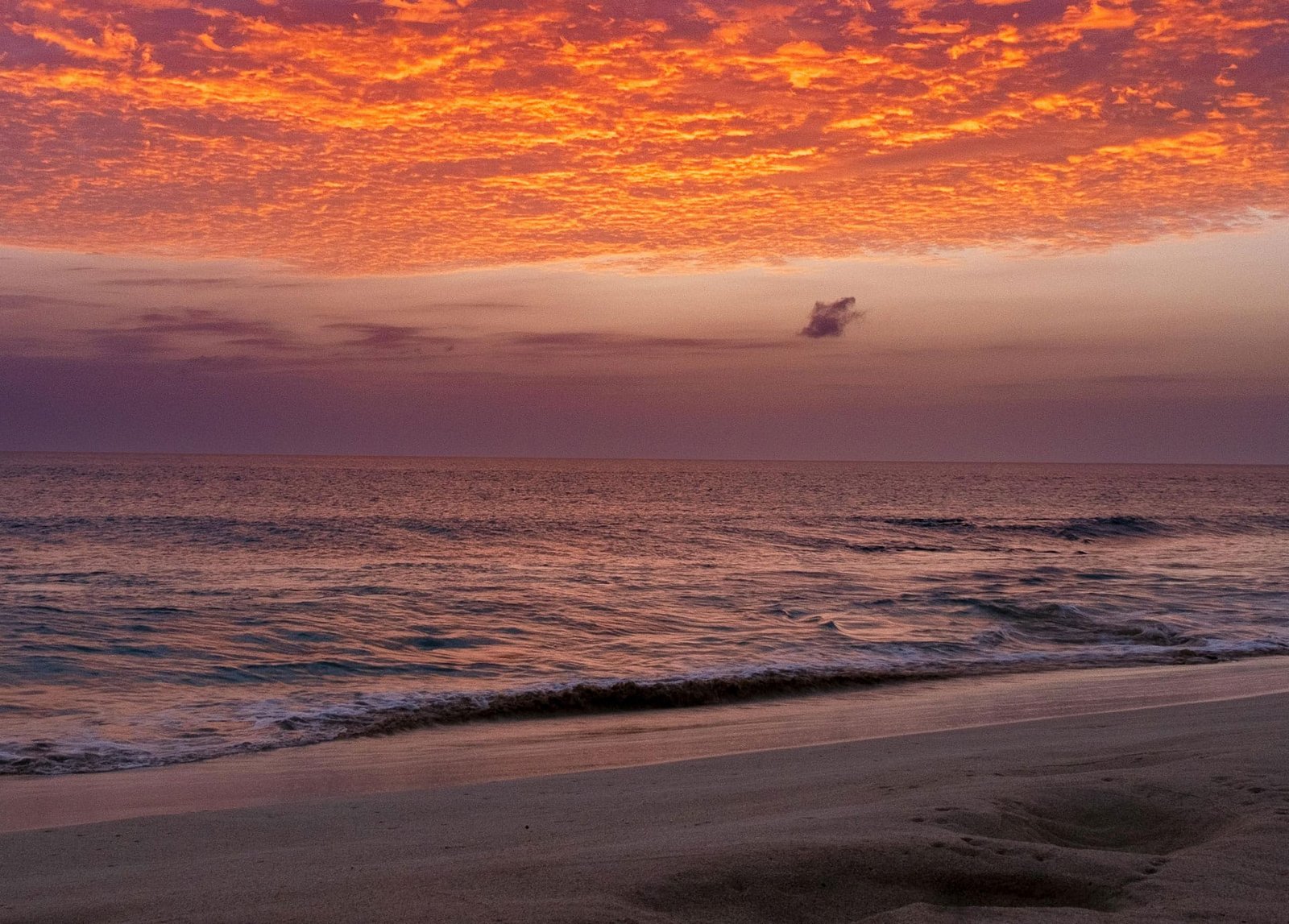
Sunrise Truths at Santa Maria Beach
4:30 AM at Santa Maria Beach. The hotels sleep. The bars are closed. The wind hasn’t started. This is when the beach tells the truth.
Watch the ghost crabs emerge from holes that appear like constellations across the sand. See the turtle tracks from females who still nest here despite the light pollution. Notice the plastic washing ashore — Portuguese water bottles, Spanish sunscreen, the international language of trash.
The beach cleaners arrive at 5 AM, collecting what the tide delivered. A ton of waste is generated weekly during high season. They work fast, erasing evidence before tourists wake. By 7 AM, the beach looks virgin again, ready for another day of being paradise.
Isabel manages beach operations for the municipality. She’s been doing this job for twelve years, watching Santa Maria Beach evolve from community space to commodity. “We’re not preserving the beach,” she says, watching her crew work. “We’re manufacturing it. Every morning, we create what tourists expect to find.”
The erosion data show two metres of beach lost in the past decade. The sand replacement proposals cost more than the island’s education budget. The sewage treatment plans that never get funded are often due to hotels threatening to leave if taxes increase. The future where Santa Maria Beach might exist only in photographs.
The Democracy of Salt Water
Despite everything — the commodification, the exclusion, the slow-motion environmental disaster — Santa Maria Beach remains Cape Verde’s most democratic space. The ocean doesn’t check room keys. Waves don’t discriminate by nationality. Salt water treats everyone equally, whether they paid €300 for a flight from Lisbon or were born in the houses behind the hotels.
Sunday mornings prove this. Before the tour buses arrive, before the beach bars open, before the economy starts demanding its tribute, local families claim their beach. They come on foot, carrying coolers and speakers, as well as children and grandparents. They set up in the same spots their families have used for generations, spaces that don’t appear on any resort map.
What Remains When the Tide Goes Out
The future of Santa Maria Beach writes itself in development proposals and climate projections. Another 1,000 hotel rooms have been approved for construction. The airport expansion is expected to double capacity by 2027. Water consumption already exceeds sustainable supply. The reef that protects the bay is dying from temperature rise and sewage. The sand disappears faster than it accumulates.
Yet people keep coming. British retirees who sell their London flats to buy apartments in Santa Maria. Italian kitesurfers who schedule their lives around wind seasons. Cape Verdean emigrants who return from Boston and Rotterdam, searching for something that might no longer exist but feels essential anyway.
The beach endures because beaches always do, even as everything around them changes. The fishermen will adapt or disappear. The hotels will multiply until economics or ecology stops them. The tourists will continue to arrive until somewhere else becomes cheaper or climate change renders beach holidays unsustainable.
But tomorrow morning, João Fernandes will still load ice into his boat. Children will still jump from the pontão. The trade winds are expected to arrive around 2 PM. The water will still glow that impossible turquoise, even if it’s slightly warmer, slightly more acidic, and somewhat less alive than it was yesterday.
This is Santa Maria Beach. It’s not a paradise, nor a disaster. It’s a place where global economics meets local reality. And where traditional life adapts to tourist expectations. It’s also a place where the ocean remains honest even as everything else becomes a performance. It’s a beach that tells the story of our times, written in sand that tomorrow’s tide will erase and rewrite, over and over, until the water rises high enough to end all stories.
Stand at the waterline at sunset. Feel the sand shift beneath your feet as waves arrive and retreat. Listen to the languages mixing — Kriolu and German, Portuguese and Italian, the universal sound of children playing in water. Watch the kitesurfers launch their final jumps against the dropping sun. Smell the fish grilling at beachfront restaurants, the same species João caught this morning, priced for people who earn in a day what he makes in a month.
This is Santa Maria Beach as it actually exists — complicated, compromised, irresistibly beautiful, probably doomed, definitely worth experiencing while it lasts. Not the paradise from brochures, but something more interesting: a real place where real people navigate the distance between what was, what is, and what’s coming next.
The moon rises. The tide turns. Tomorrow, the theatre begins again.
Bibliography and Sources
- Luís Tourism and Development in Cape Verde, Batalha, University of Lisbon, 2018;
- Basil The Fortunate Isles: A Study in African Transformation, Davidson, Africa World Press, 1989;
- Beach erosion studies, University of Cape Verde;
- Santa Maria, Sal and Tourism in Cape Verde on Wikipedia, The Free Encyclopedia;
- Praia de Santa Maria on TripAdvisor;
- Project Biodiversity;
- Instituto Nacional de Estatística Cabo Verde (INE-CV) – National Statistics Institute of Cape Verde;
- Câmara Municipal do Sal – Sal Municipality Official Website;
- World Bank Cape Verde Overview 2024;

